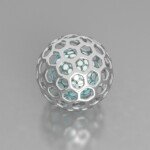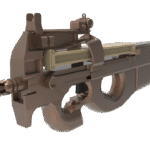CNC Foam Milling: A Comprehensive Guide
Foam milling powered by computer numerical control (CNC) technology has revolutionized prototyping, model making, and even some production applications. The technology can accurately and efficiently create complex shapes and geometries using various types of foam, opening the door to innovation in different industries. This guide delves into the intricacies of CNC foam milling, covering its benefits, applications, materials, the process itself, and factors to consider when choosing CNC machining services.
Why Choose CNC Foam Milling?
The advantages of using CNC foam milling are many:
- Speed and efficiency: CNC machines can cut foam quickly, significantly reducing production time compared to manual methods. This is especially valuable for projects that require quick turnaround times.
- Precision and accuracy: CNC technology ensures high precision and accuracy, enabling the creation of intricate details and complex geometries that would be difficult or impossible to achieve manually. This is crucial for functional prototypes and accurate models.
- Repeatability: Once the design is programmed into the CNC machine, the same parts can be produced consistently, eliminating variation and ensuring consistency.
- Cost effectiveness: While the initial investment in CNC equipment or services may seem large, the efficiency and accuracy of the process can lead to long-term cost savings by reducing material waste, minimizing errors and speeding up production.
- Design flexibility: CNC milling provides unparalleled design flexibility to create complex 3D shapes, intricate carvings and unique textures.
Applications of CNC Foam Milling:
The versatility of CNC foam milling makes it suitable for a wide range of industries and applications:
- Prototyping: Creating functional prototypes for product development allows designers and engineers to test and refine their designs before committing to more expensive materials. This is critical for automotive, aerospace and consumer products.
- Model making: Produce architectural models, scale models of engineering projects, and display models for exhibitions and presentations. The lightweight nature of the foam and the precision of CNC milling make it ideal for complex model creation.
- Signage and Display: Create custom signs, promotional displays and point-of-sale materials with unique shapes and textures.
- Package: Design and manufacture custom foam liners for packaging to protect delicate items during shipping and storage.
- Themed environment and props: Create props for films, theater productions and themed attractions, providing a lightweight and cost-effective alternative to heavier materials.
- Aerospace component molds: Foam molds for composite layup processes in the aerospace industry, capable of creating complex aerodynamic shapes.
- Medical model: Anatomical models are produced for surgical planning and training, providing surgeons with a realistic representation of the patient’s anatomy.
- Casting pattern: Create sand casting process models that allow the production of metal parts with complex geometries.
Commonly used materials for CNC foam milling:
A variety of foam materials can be used in CNC milling, each with unique properties and characteristics:
- Expanded polystyrene (EPS): A lightweight and inexpensive foam commonly used for packaging and insulation. It is easy to work with but is brittle and produces a lot of dust.
- Extruded polystyrene (XPS): Denser and stronger than EPS, with better dimensional stability and water resistance. It is commonly used for architectural models and signage.
- Polyurethane (PU): A versatile foam available in a variety of densities and properties. It is more durable and wear-resistant than polystyrene foam, making it suitable for functional prototypes and tooling. High density PU foam can handle abrasive machining processes.
- Polyethylene (PE): A flexible, durable foam commonly used for packaging and padding. It is resistant to chemicals and moisture.
- EVA foam (ethylene vinyl acetate): A rubber-like foam with excellent cushioning and shock-absorbing properties. It is commonly used in sports equipment, flooring and protective gear.
- Rigid polyurethane foam (RPF): A high-density foam that can be processed to produce precision parts with a good surface finish. Often used for tools and patterns.
CNC foam milling process:
The CNC foam milling process typically includes the following steps:
- design: Use CAD (computer-aided design) software to create a 3D model of the required part.
- CAM programming: Use CAM (computer-aided manufacturing) software to convert the 3D model into CNC machine code (G-code). This code instructs the machine how to move the cutting tool to create the desired shape.
- Machine settings: Secure the foam block to the CNC machine table. This may involve the use of clamps, adhesives or vacuum systems. Then load the G-code.
- Milling: The CNC machine precisely moves the cutting tool to remove material from the foam block according to programmed instructions. Multiple passes may be required to achieve the desired shape and finish.
- finishing: Depending on the application, additional finishing steps may be required, such as sanding, painting or coating.
Choose the right CNC machining service:
Choosing the right CNC machining services is critical to the success of your project. Consider the following factors:
- experience: Look for a service with CNC foam milling experience and a proven track record of delivering high-quality results.
- equipment: Ensure the service has the necessary CNC machinery and tooling to meet the size, complexity and material requirements of your project. 5-axis CNC machining can create more complex designs.
- Materials expertise: Verify that the service personnel has experience handling the specific type of foam you intend to use and understands its properties and processing characteristics.
- Software features: Make sure the service uses the latest CAD/CAM software and integrates seamlessly with your design files.
- Quality control: Ask about the service’s quality control process to ensure accuracy and consistency.
- Turnaround time and pricing: Discuss your project timeline and budget, and compare quotes from different services.
- Communication and support: Look for a service provider that provides good communication and support throughout the process.
Gretel: Your precision CNC machining partner
Honglaite is a professional five-axis CNC machining manufacturer with advanced equipment and production technology. We specialize in solving complex metal part manufacturing challenges, but our expertise also extends to foam milling. We offer one-stop post-processing and finishing services for a variety of materials, ensuring your project meets your exact specifications. With our commitment to quality, precision and customer satisfaction, GreatLight is your ideal partner for custom precision machining. Customize your precision parts now at the best price!
in conclusion:
CNC foam milling provides a versatile, efficient and cost-effective solution for creating prototypes, models and a variety of other products. By understanding the process, materials and key considerations, you can harness the power of CNC technology to turn your ideas into reality. Choosing the right CNC machining service, such as GreatLight, is crucial to ensuring successful and high-quality results. Whether you’re creating rapid prototypes or complex props, CNC foam milling has the precision and speed you need.
Frequently Asked Questions (FAQ):
-
What are the typical tolerances achievable with CNC foam milling?
Tolerances vary based on foam material, machine capabilities and part geometry. Generally speaking, the tolerance is +/- 0.010" to +/-0.030" It is achievable. However, with specialized techniques and materials, tighter tolerances can be achieved.
-
Can CNC foam milling be used for high-volume production?
While CNC foam milling is primarily used for prototyping and low-volume production, it is also suitable for high-volume production in certain applications. However, mold wear and processing time of the foam must be considered when evaluating the cost-effectiveness of large-scale production.
-
What are the limitations of CNC foam milling?
Limitations include the relatively low strength and durability of foam compared to other materials, the potential for dust generation during processing, and the need for specialized tools and techniques for some foam types.
-
What types of files are required for CNC foam milling?
The most common file format for CNC foam milling is STL (stereolithography). Other acceptable formats may include STEP, IGES, and SolidWorks files. Please consult your CNC machining service to find out their preferred file formats.
-
How much does CNC foam milling cost?
The cost of CNC foam milling depends on several factors, including the size and complexity of the part, the type of foam material, machining time and finishing requirements. Requesting a quote from CNC machining services is the best way to determine the cost of your specific project.
-
What is the difference between 3-axis and 5-axis CNC foam milling?
A 3-axis CNC mill can move the cutting tool along three linear axes (X, Y, and Z). 5-axis machines have two additional axes of rotation and can machine more complex shapes. 5-axis CNC milling offers greater design freedom and can reduce the number of setups required for complex parts.
-
What should we pay attention to when removing dust during CNC foam milling?
During CNC foam milling, effective dust removal is critical to maintaining a clean work environment, preventing respiratory problems, and ensuring the machine operates efficiently. Use high-efficiency particulate air (HEPA) filters and enclose CNC machines to limit the spread of dust.
-
Will CNC milled foam parts have edges?
it depends. Some materials chip the least at the edges and require the least amount of sanding. Softer materials will contain more debris and require more post-processing to smooth to the final fit and finish.










































